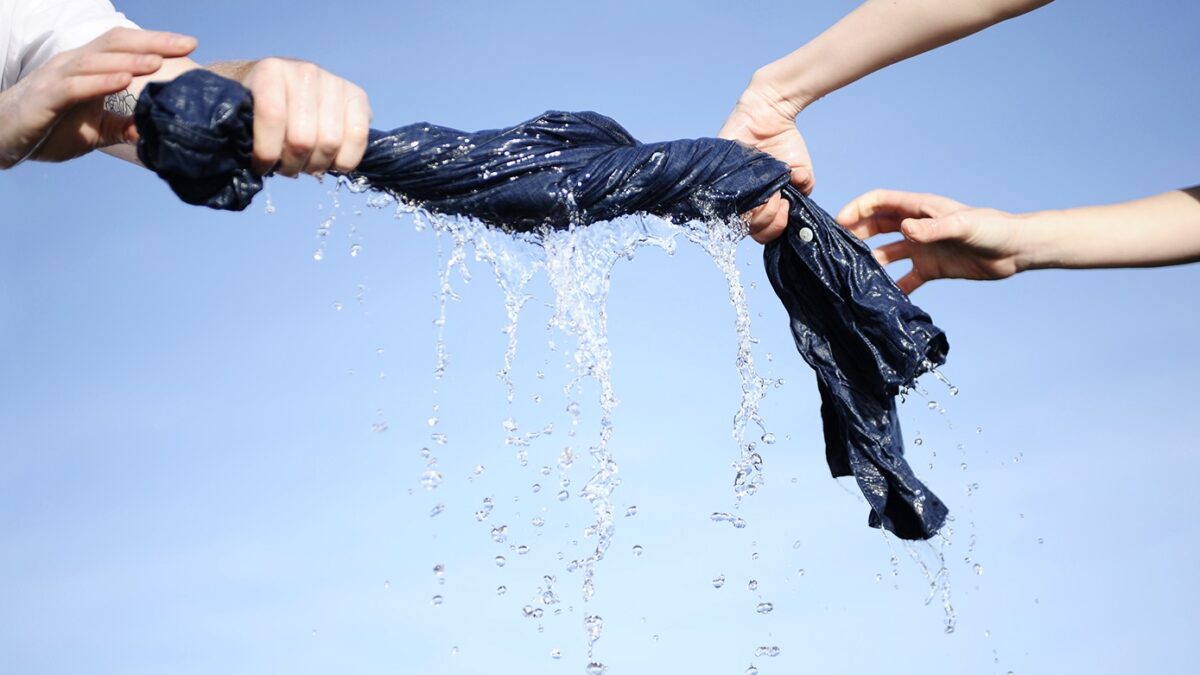Levi’s Unveils 2030 Strategy to Cut Freshwater Use and Boost Climate Resilience
Levi Strauss & Co. unveils a 2030 strategy to boost water management and strengthen climate resilience across its global supply chain.
Levi Strauss & Co. on Thursday launched an ambitious 2030 Water Strategy called Beyond the Blue to cut unnecessary use, improve quality and build climate resilience. The plan forms part of the denim maker’s broader climate transition plan focused on sustainable water management.
The strategy builds on Levi’s long history of environmental action. It focuses on three pillars — improving foundations, reducing impact and fostering resilience — to guide the company’s water management goals for the decade ahead.
“Climate change is the existential challenge of our time — and water is where many of its impacts are felt most acutely,” said Michelle Gass, president and CEO of Levi Strauss & Co. “Our 2030 Water Strategy outlines how we’ll continue leading on water stewardship by reducing our impact and strengthening resilience in the places that need it most.”
Three Pillars for a Water-Resilient Future
Improving the Foundation: Levi Strauss will use science-based insights to assess and manage its water-related risks. The company plans to focus on high-stress regions to guide action in manufacturing and sourcing.
Reducing the Impact: By 2030, Levi’s aims to cut freshwater use by 15 percent across apparel and textile suppliers, compared with 2022 levels. It targets having 40 percent of water in manufacturing recycled or reused. Levi’s will also release an open-source guide to promote responsible water management across the apparel industry.
The company said all direct discharge supplier facilities must meet the “foundational” level of compliance under the Zero Discharge of Hazardous Chemicals program, with 25 percent reaching the “progressive” level.
Fostering Resilience: Levi’s will train suppliers to strengthen their water management systems and launch watershed restoration projects in high-stress areas, including the Sutlej and Indus basins in Pakistan and the Meghna basin in Bangladesh.
It will also expand water, sanitation, and hygiene programs through partnerships like WaterAid’s Women + Water Collaborative in India. The initiative aims to provide clean water to 150,000 people within two years.
Collaboration for Broader Impact
“A reliable supply of clean water is essential for health, dignity, and opportunity. Yet 2.2 billion people still lack access,” said Kelly Parsons, CEO of WaterAid America. “In Levi Strauss & Co., we’ve found a partner that values collaboration to tackle one of the most challenging but solvable global problems.”
The 2030 plan extends Levi’s existing water goals and aligns them with global frameworks such as the Science Based Targets Network and the Taskforce on Nature-related Financial Disclosures.
“This strategy is about more than water savings — it’s about resilience and long-term business continuity,” said Jeffrey Hogue, chief sustainability officer at Levi Strauss & Co. “We’re helping our supply chain and its people adapt to the toughest impacts of climate change.”
Looking Ahead
Levi’s will report progress each year and continue to work with peers, NGOs and local communities to drive change. Its new water plan complements other initiatives, including the LEAP Energy Accelerator in India, which supports suppliers’ transition to renewable electricity.
“Levi Strauss & Co.’s leadership in improving water availability, quality, and access shows what’s possible through the Water Resilience Coalition’s Positive Water Impact framework,” said Jason Morrison, president of the Pacific Institute. “Their 2030 Water Strategy embodies the ambition needed for a water-resilient future.”
Founded in 1853, Levi Strauss & Co. is one of the world’s largest branded apparel firms, selling jeans, casual wear and accessories in about 120 countries. The company reported $6.4 billion in net revenue for 2024.
Also Read:
Levi Strauss Launches Program to Boost Renewable Energy Use in India
Nirmal Menon
Related posts
Subscribe
Error: Contact form not found.


